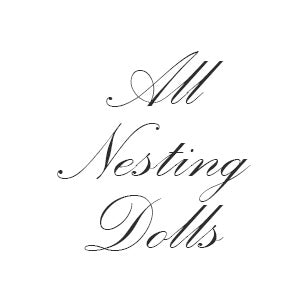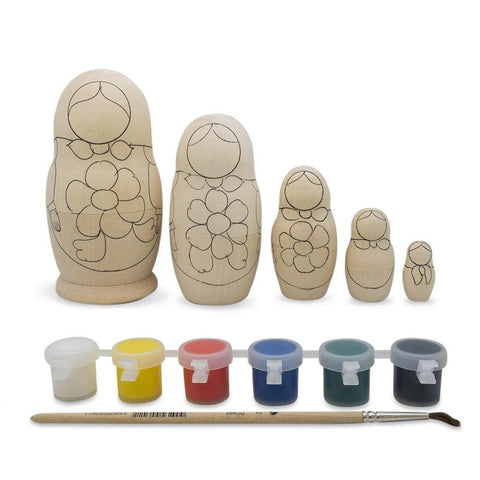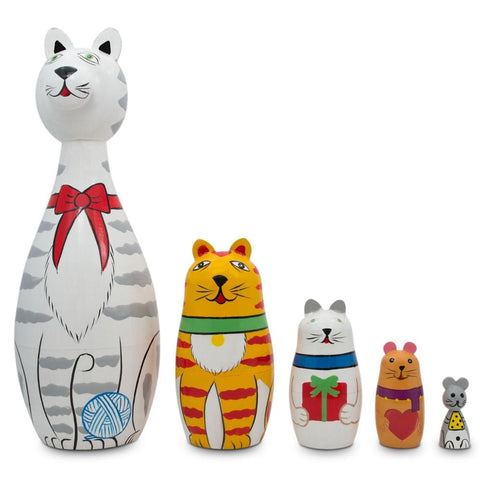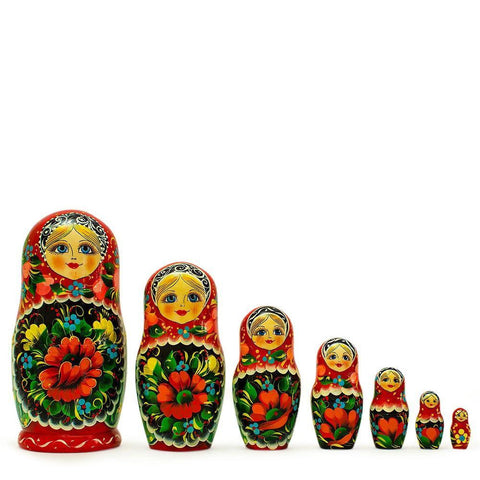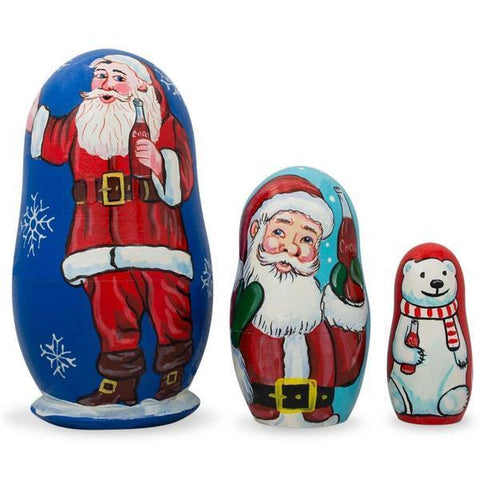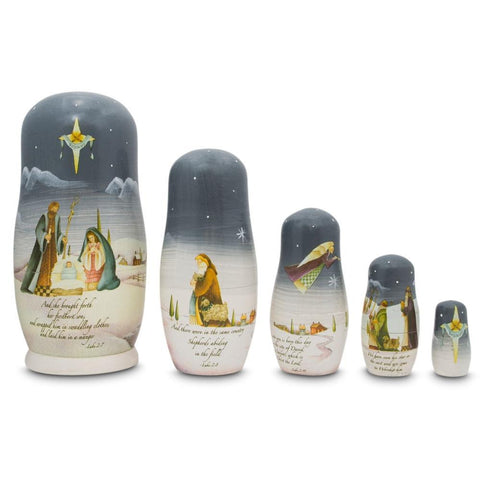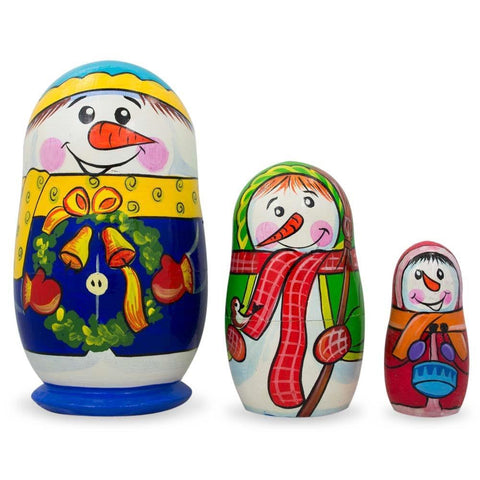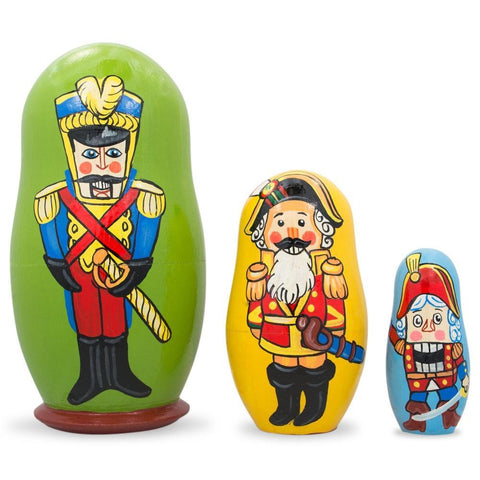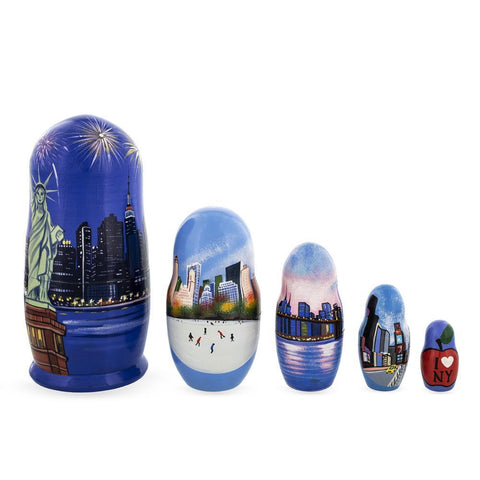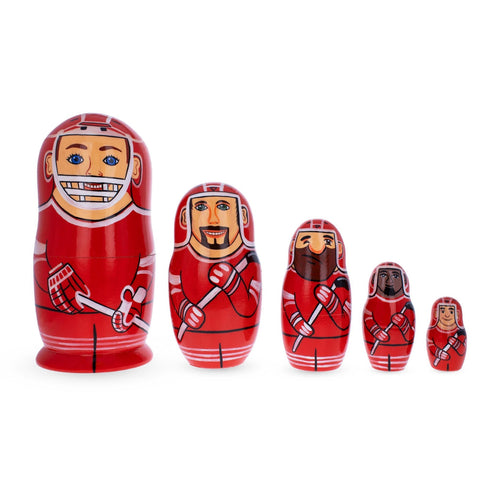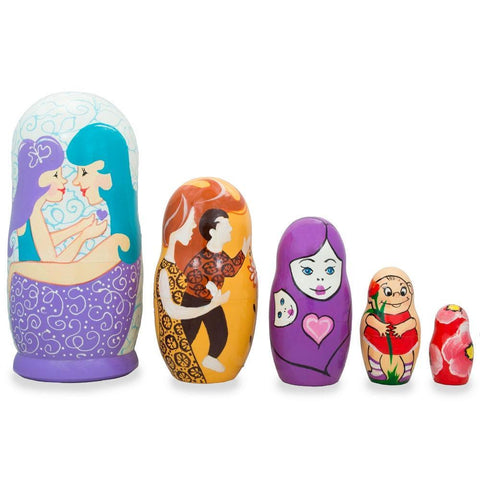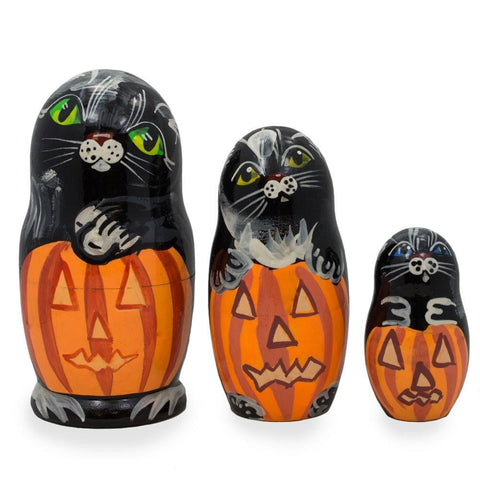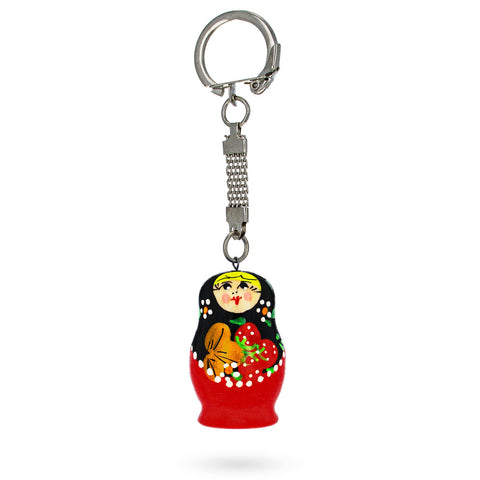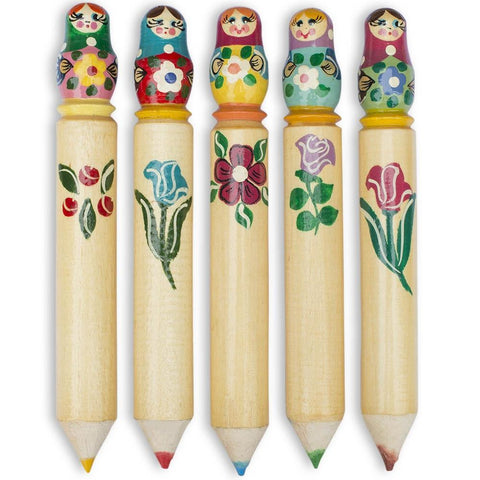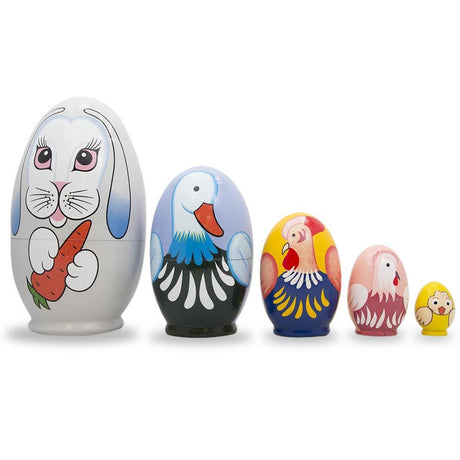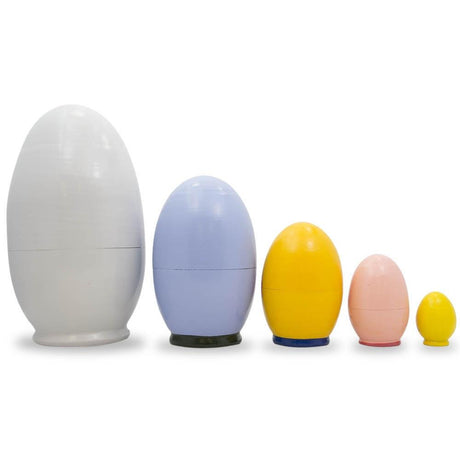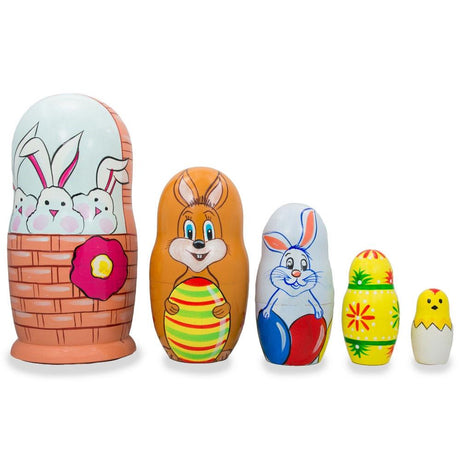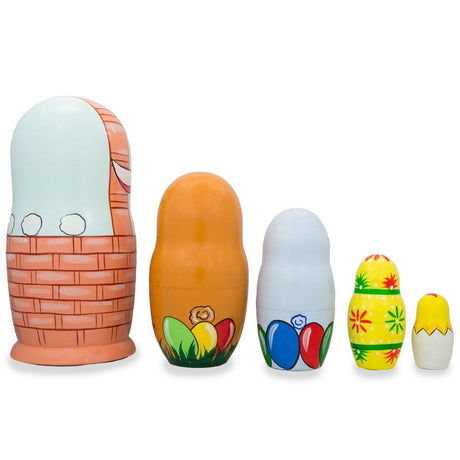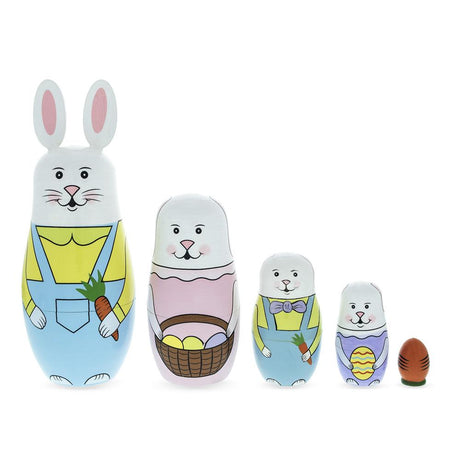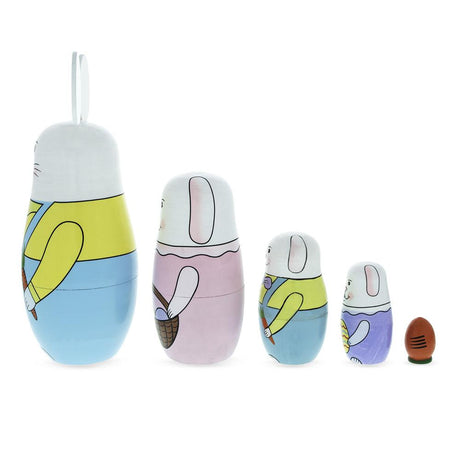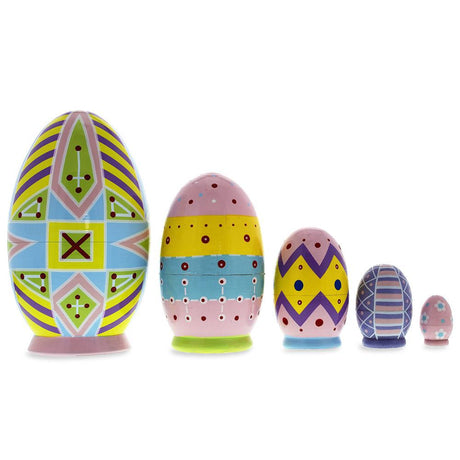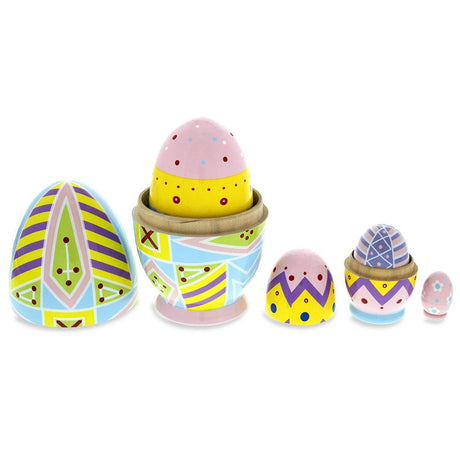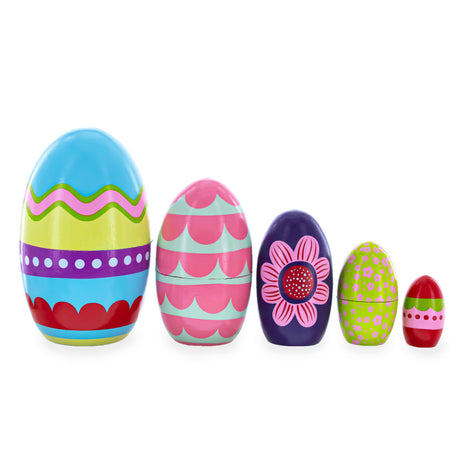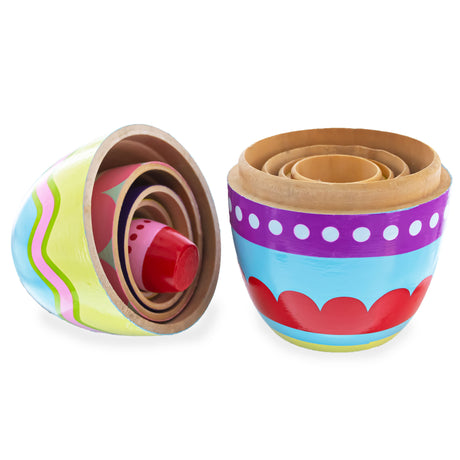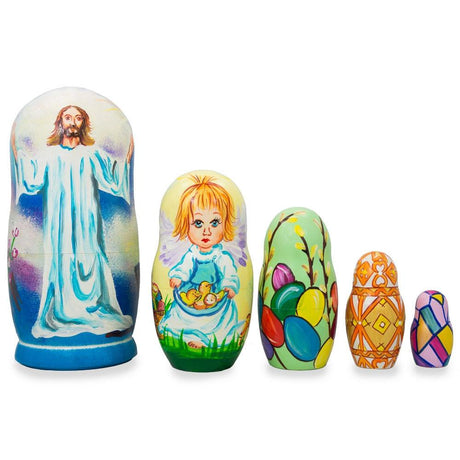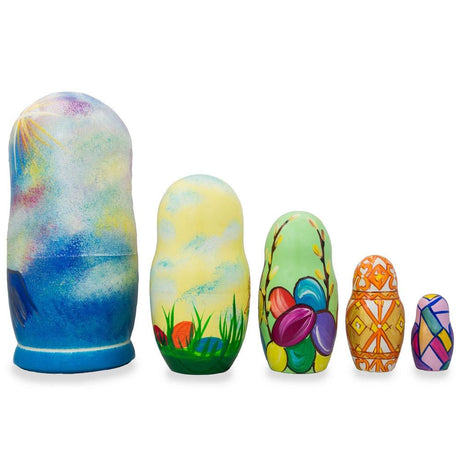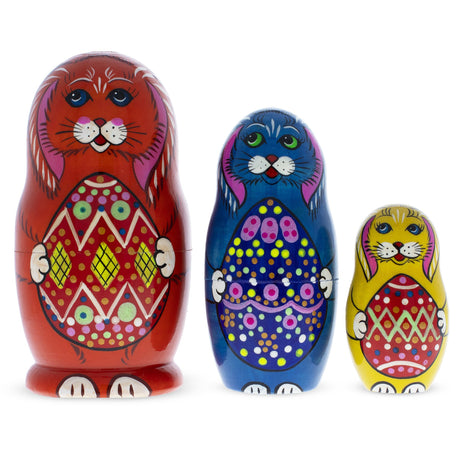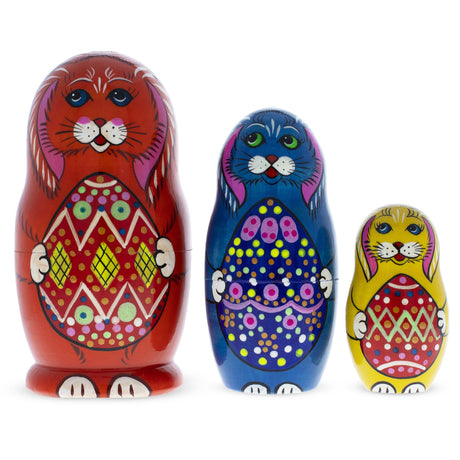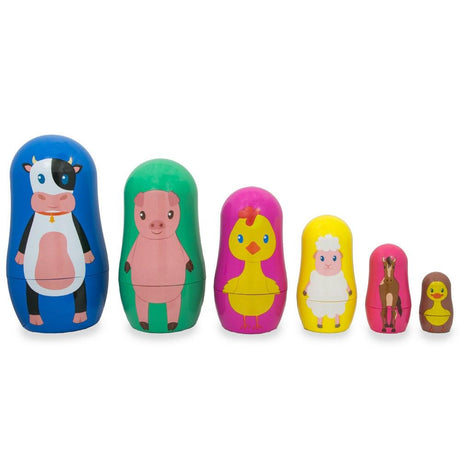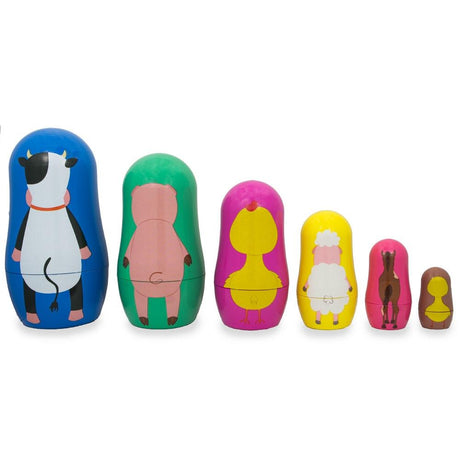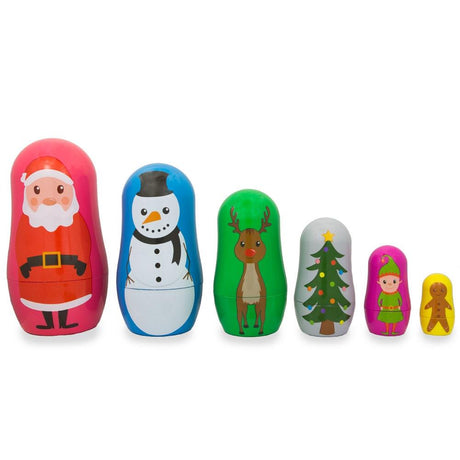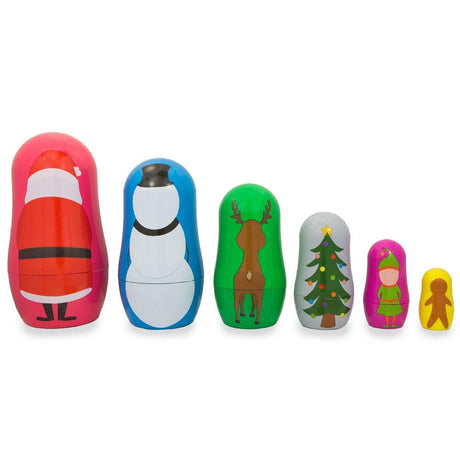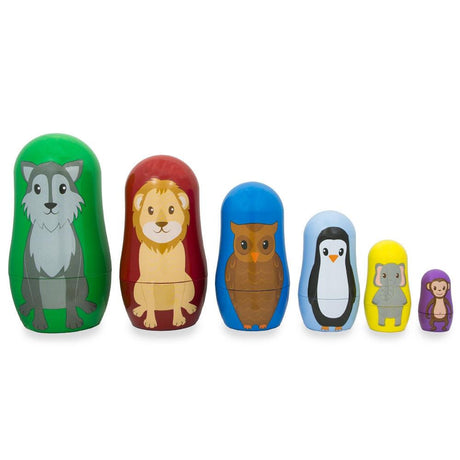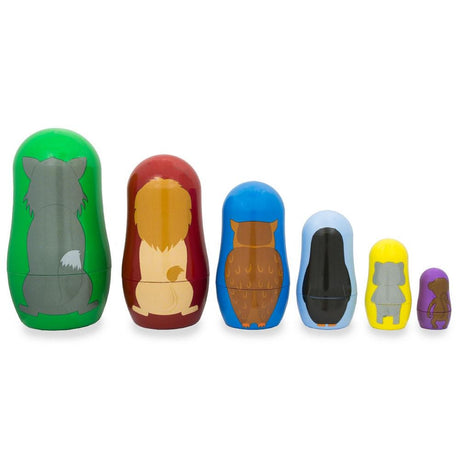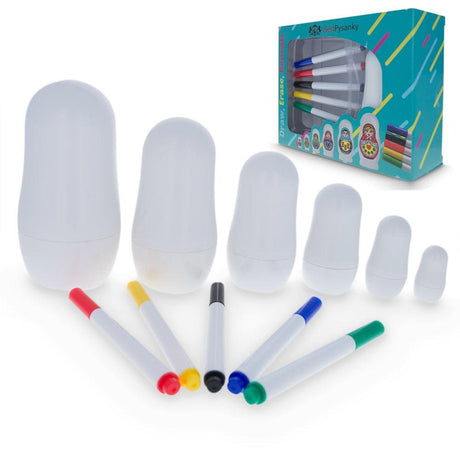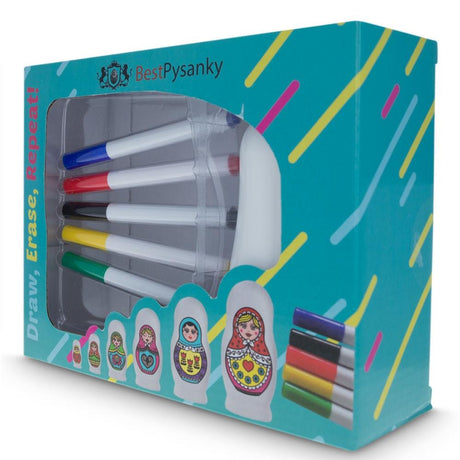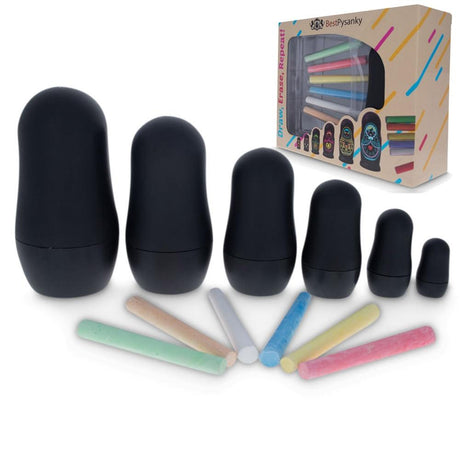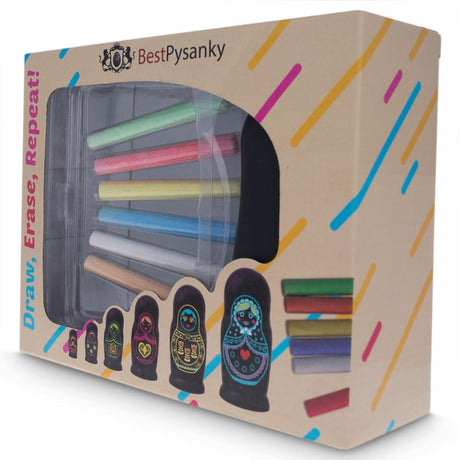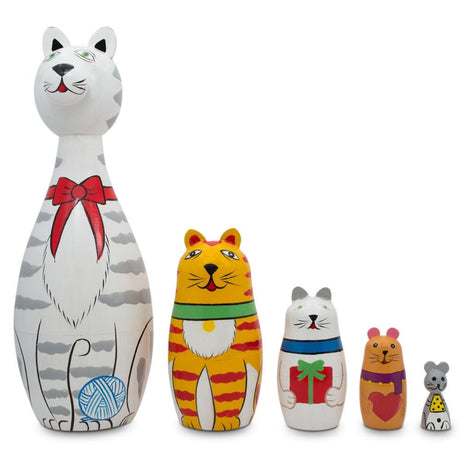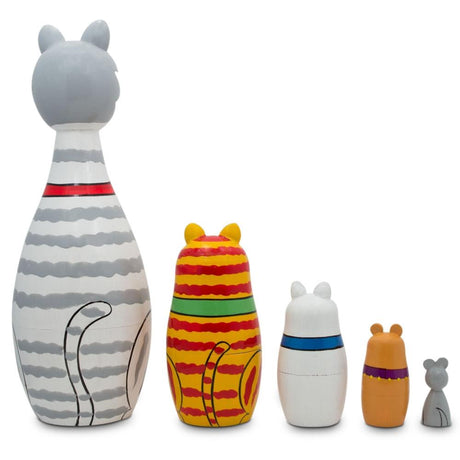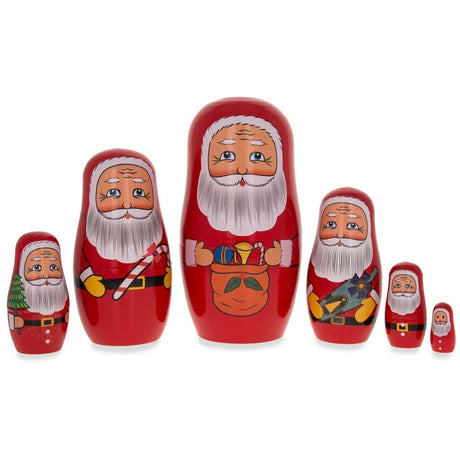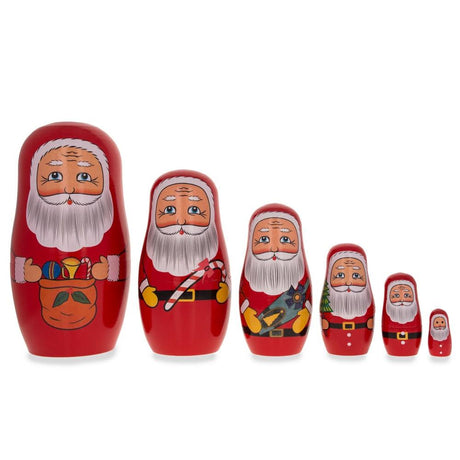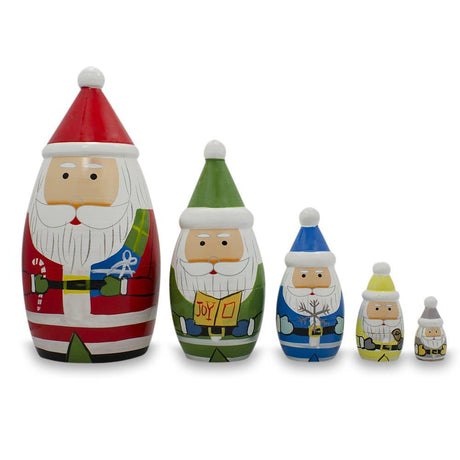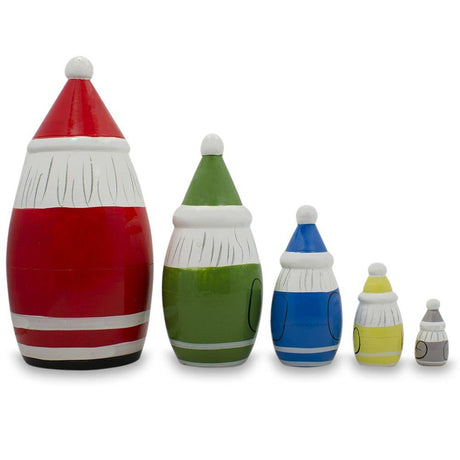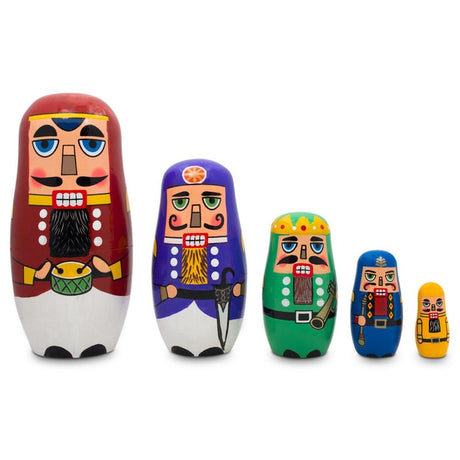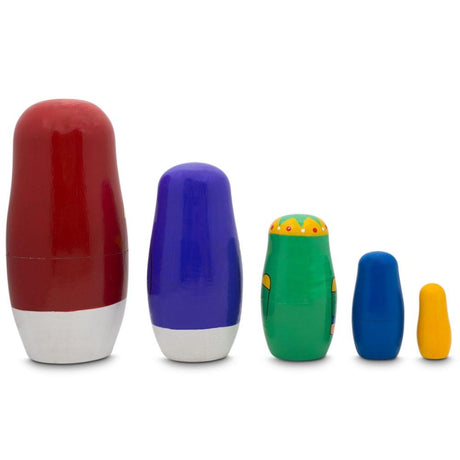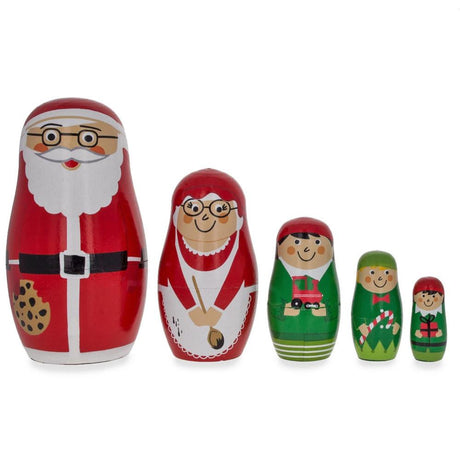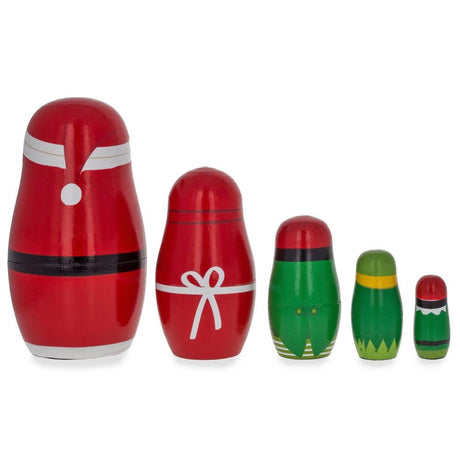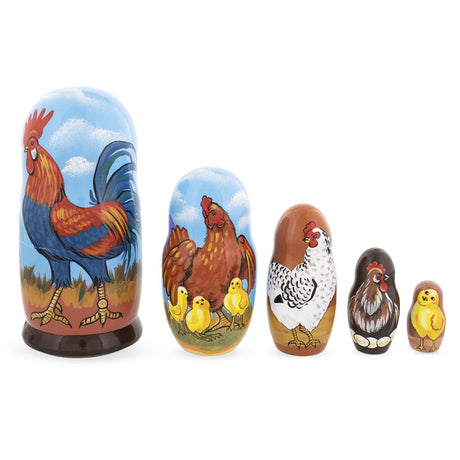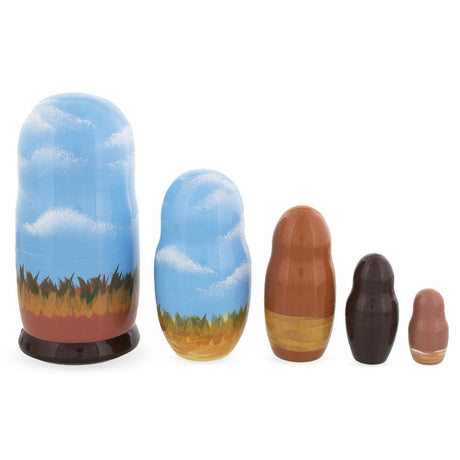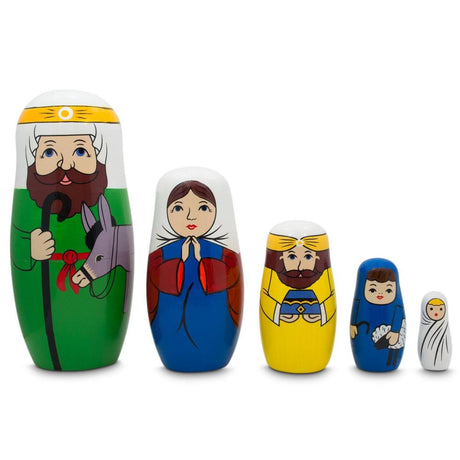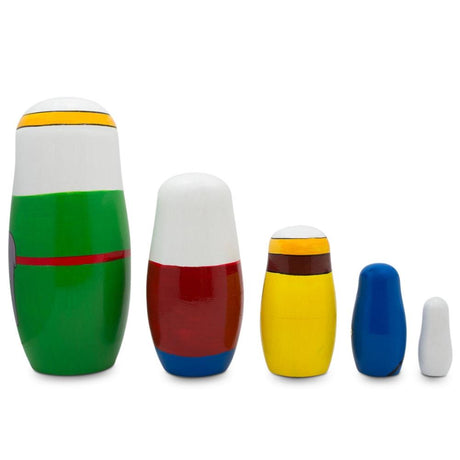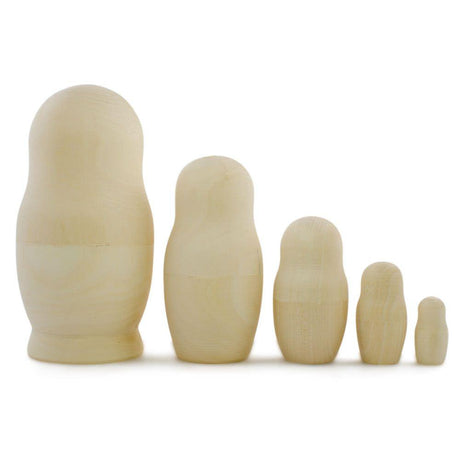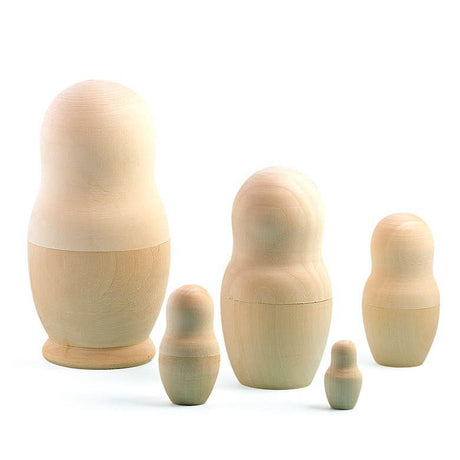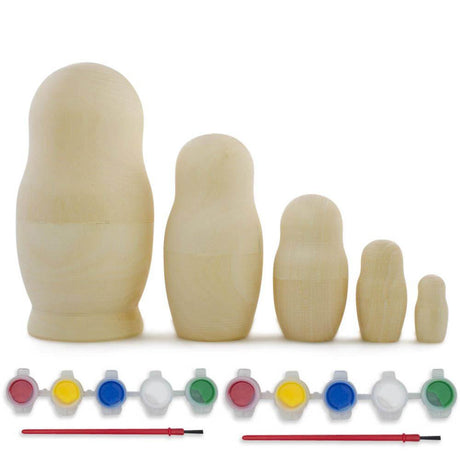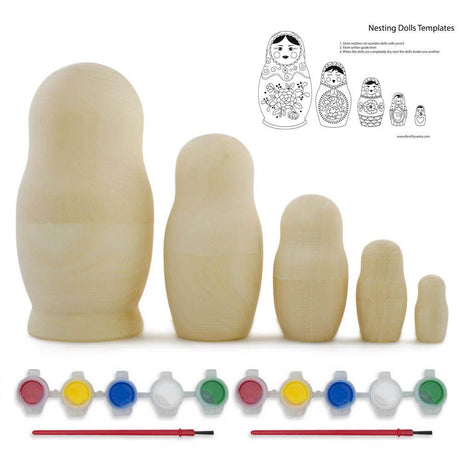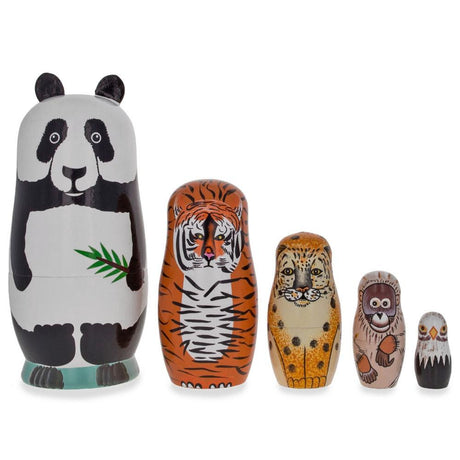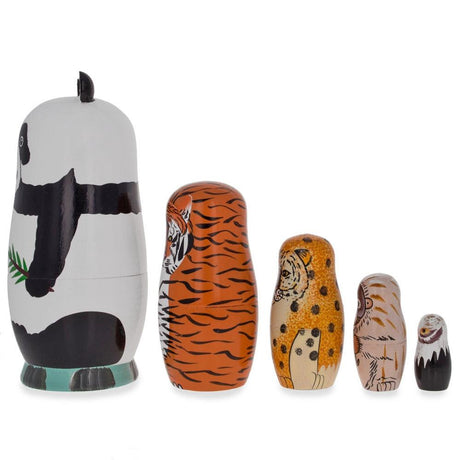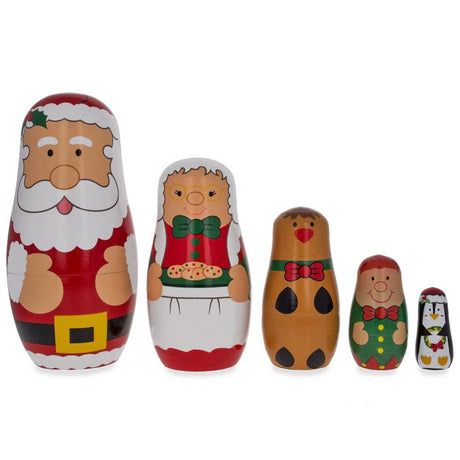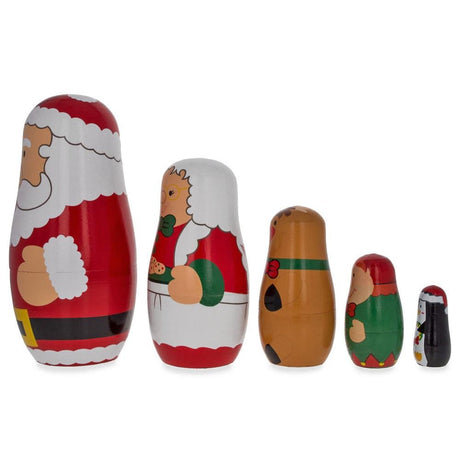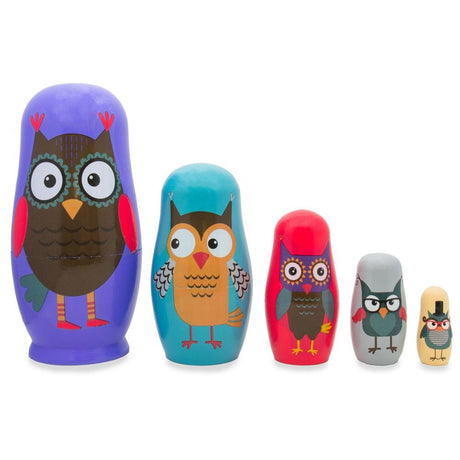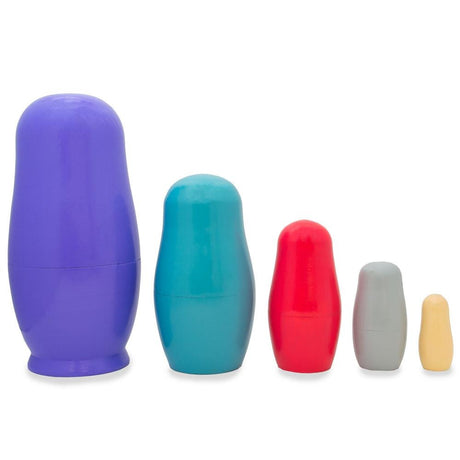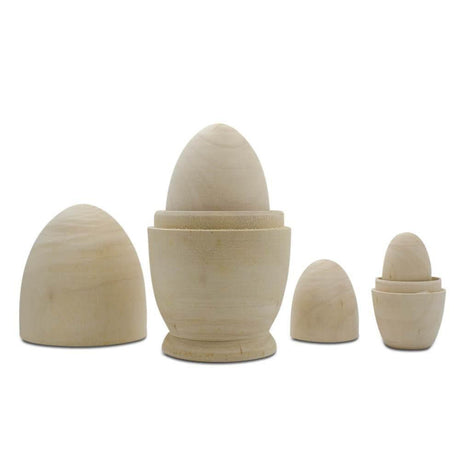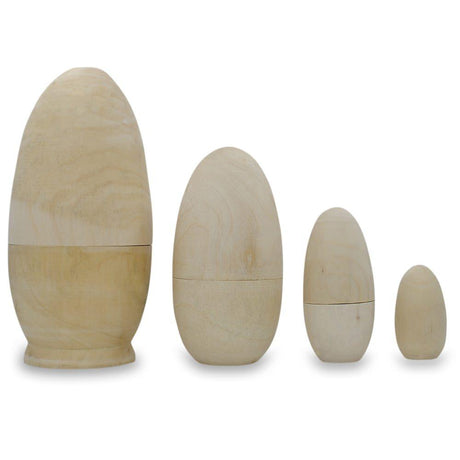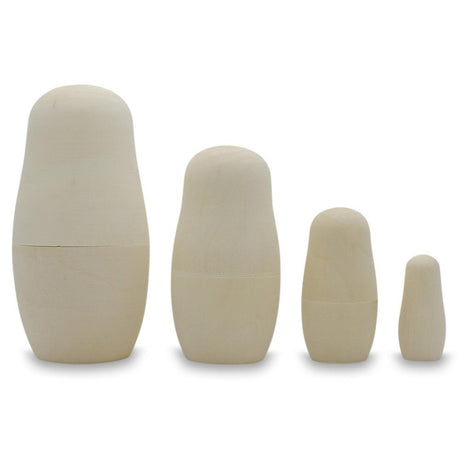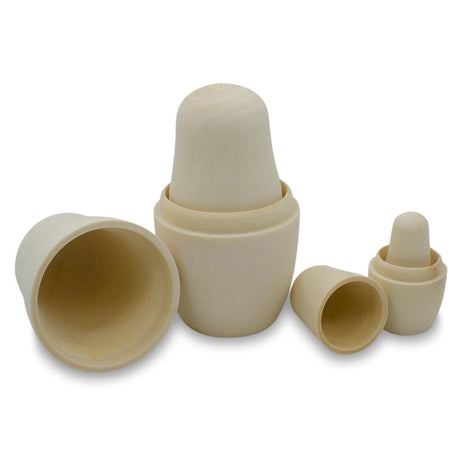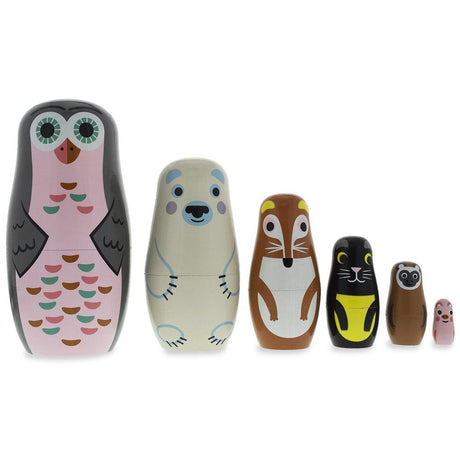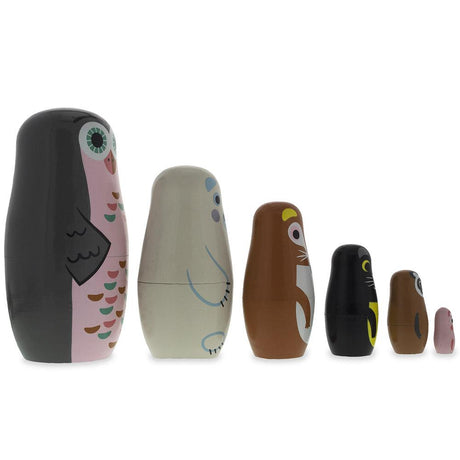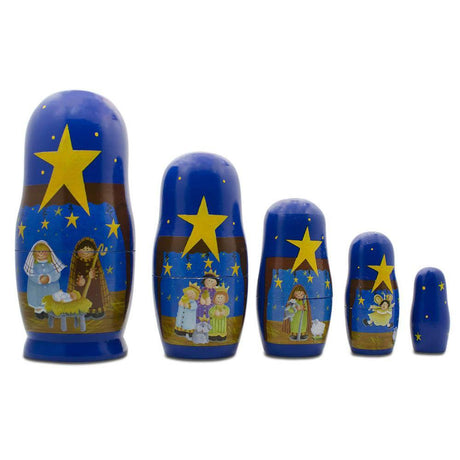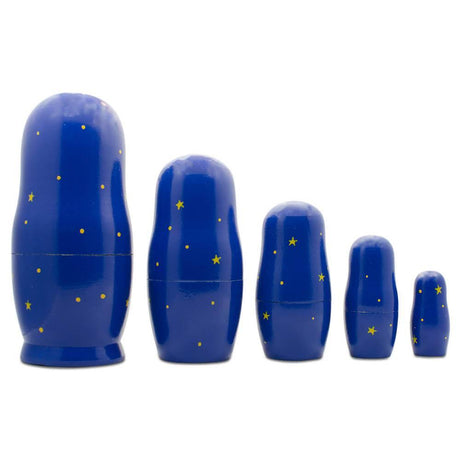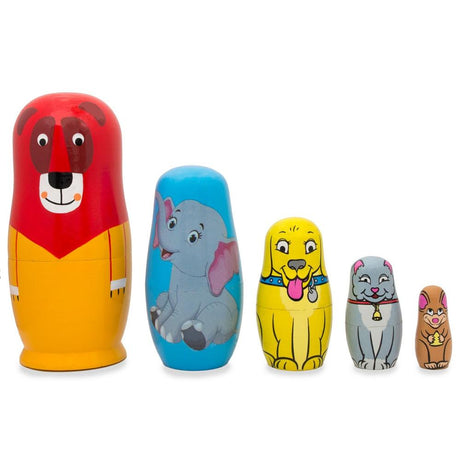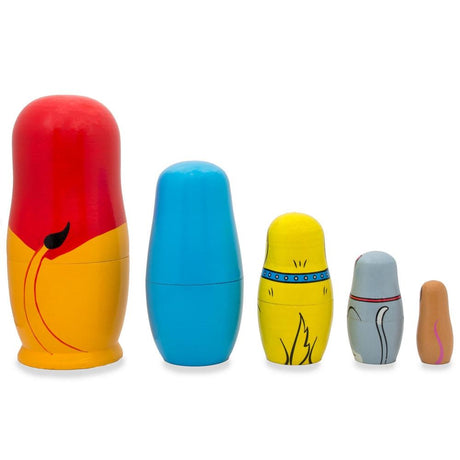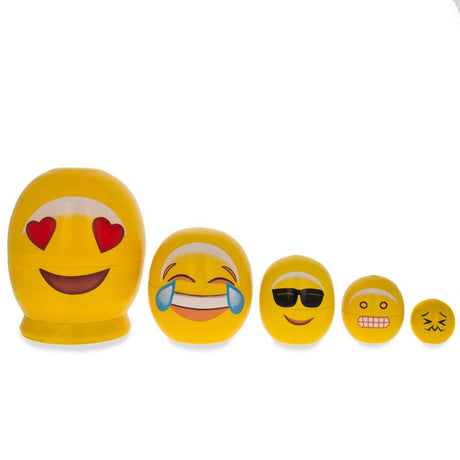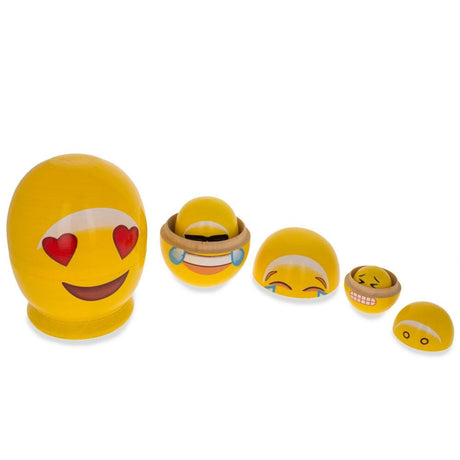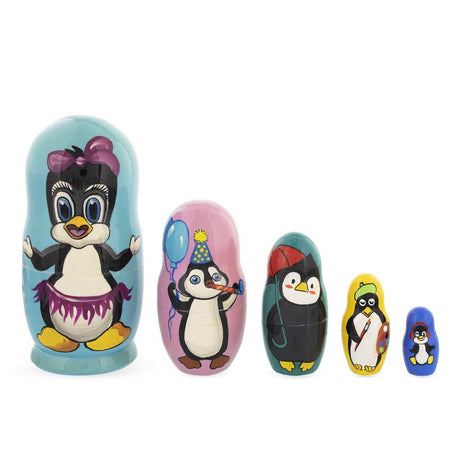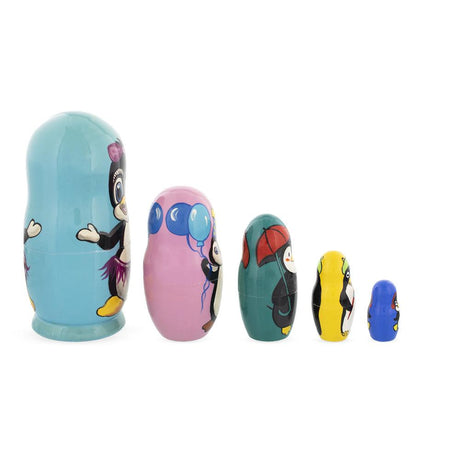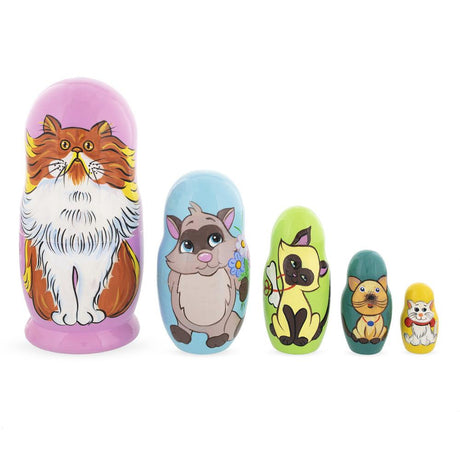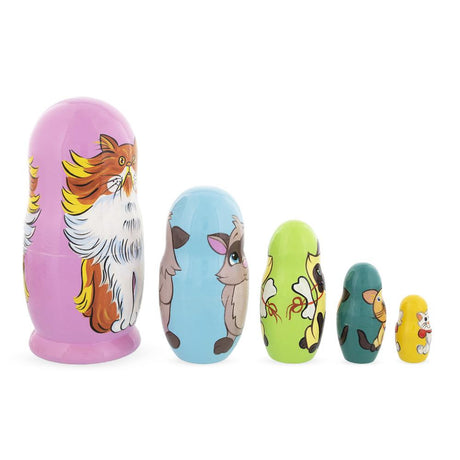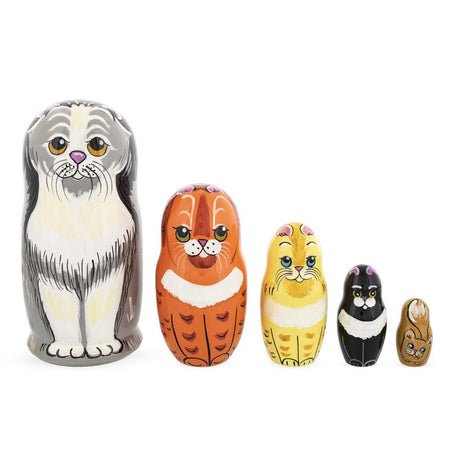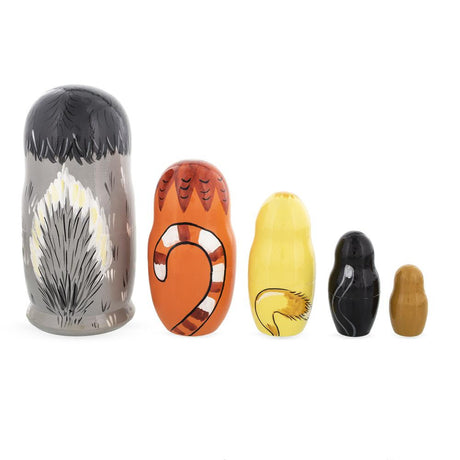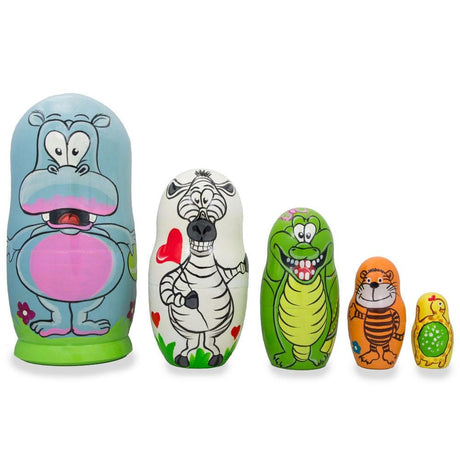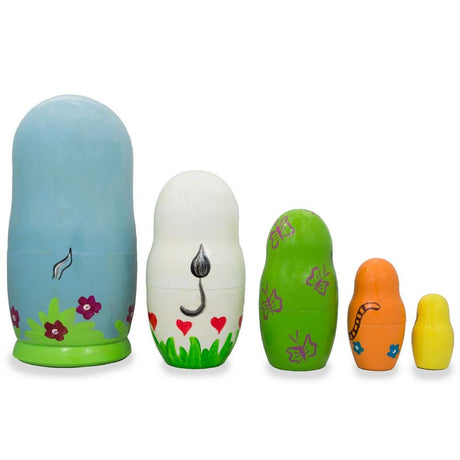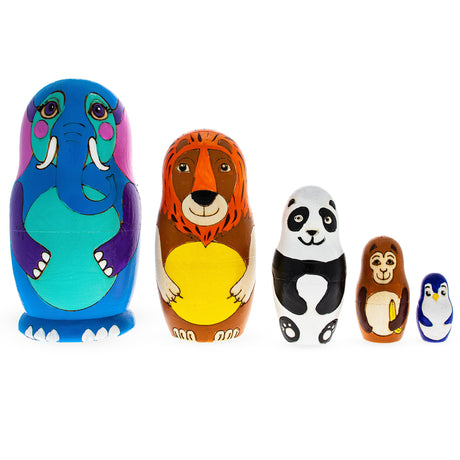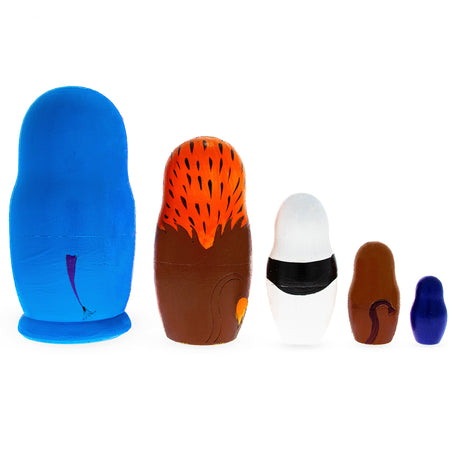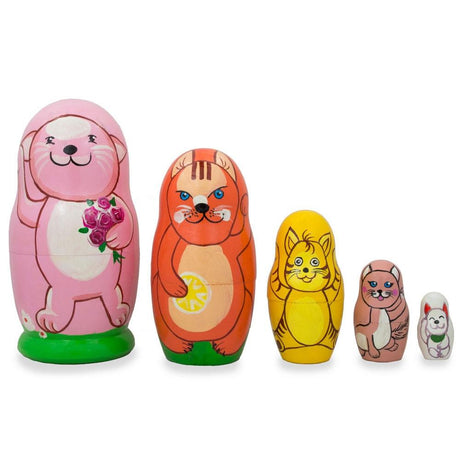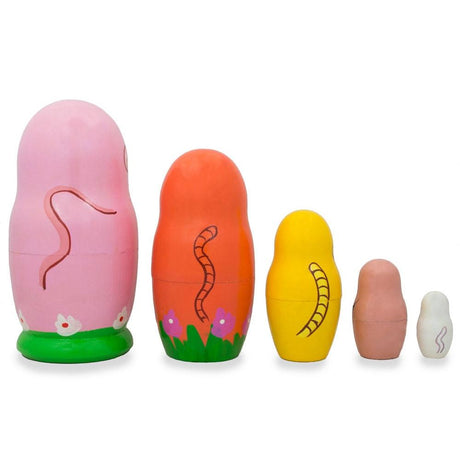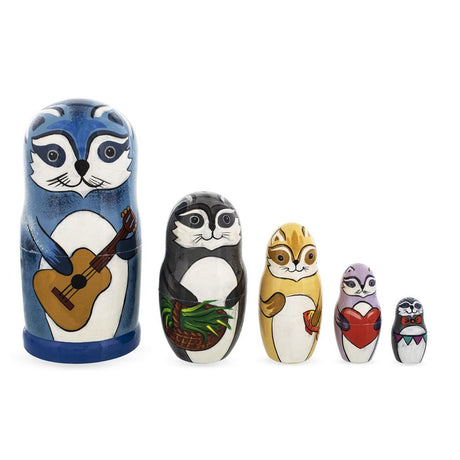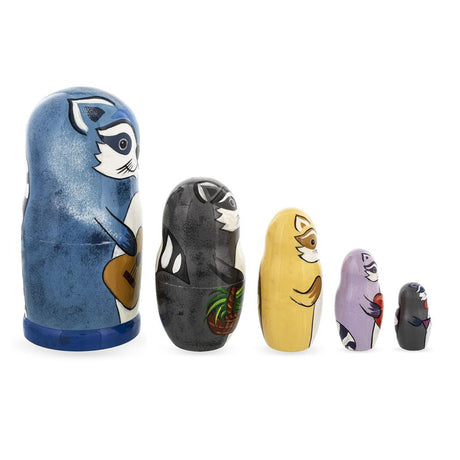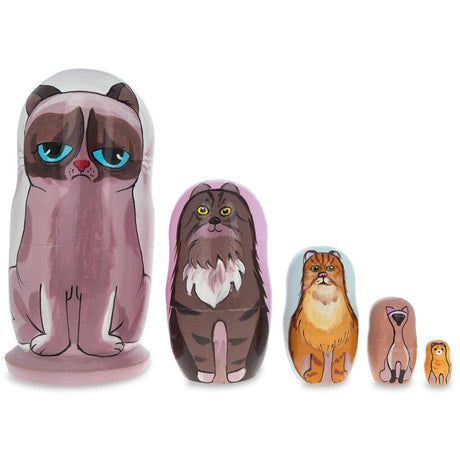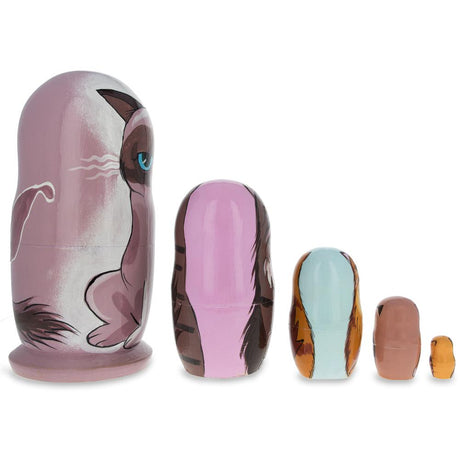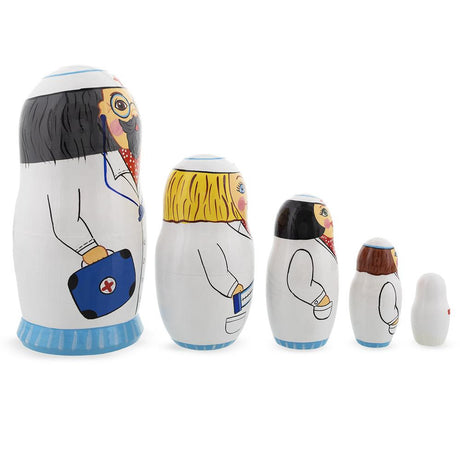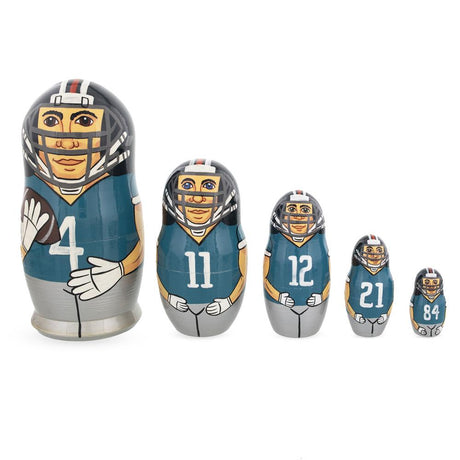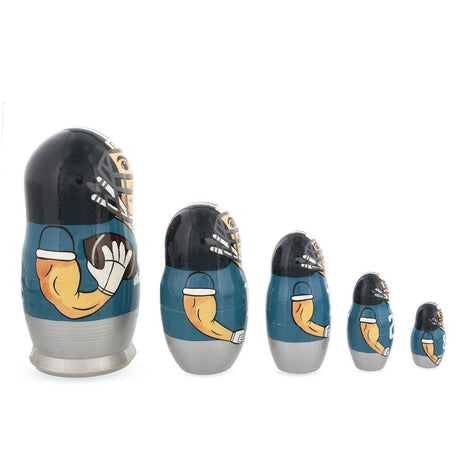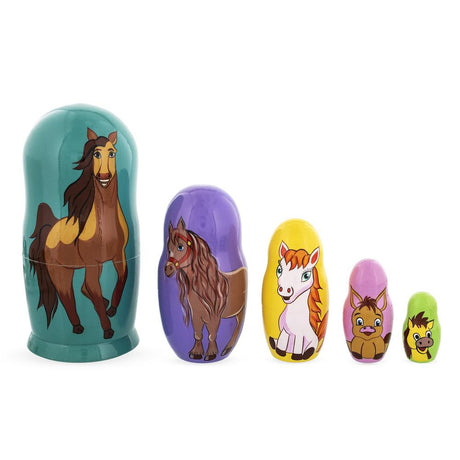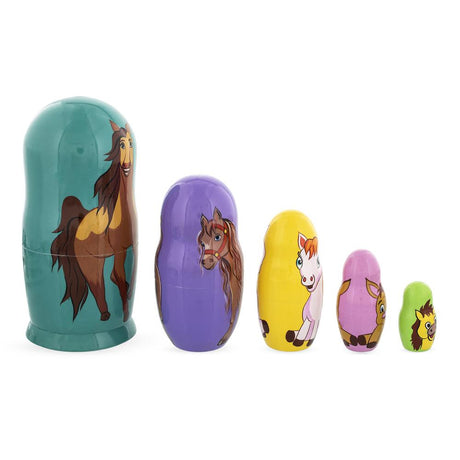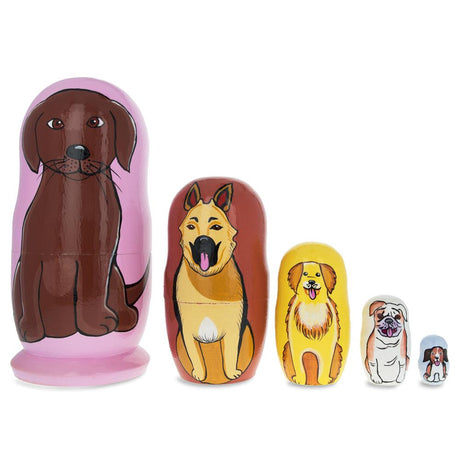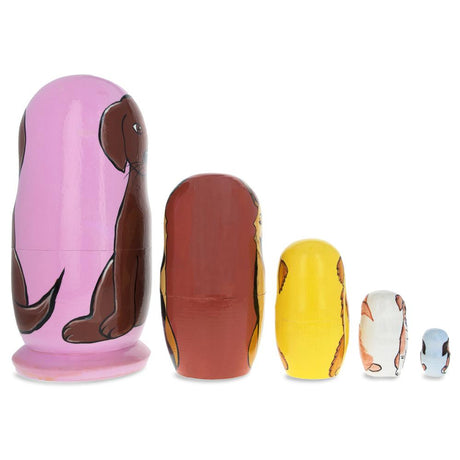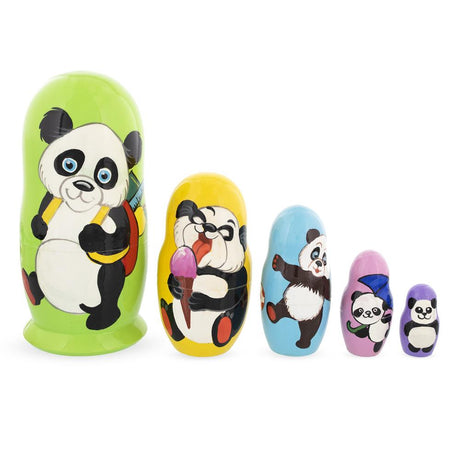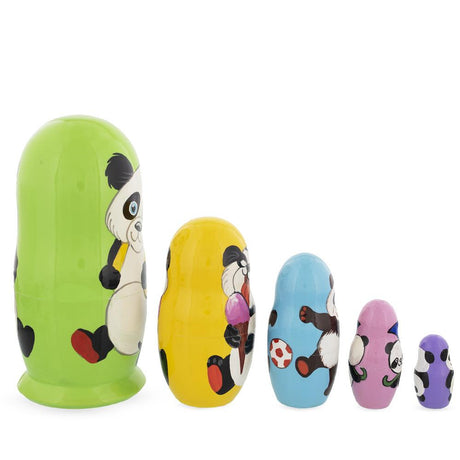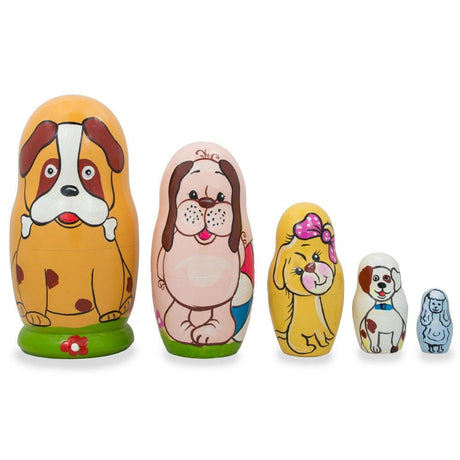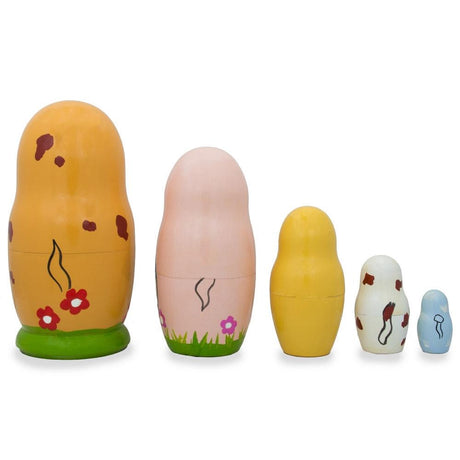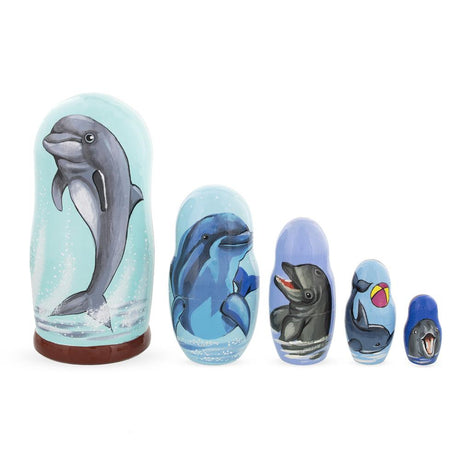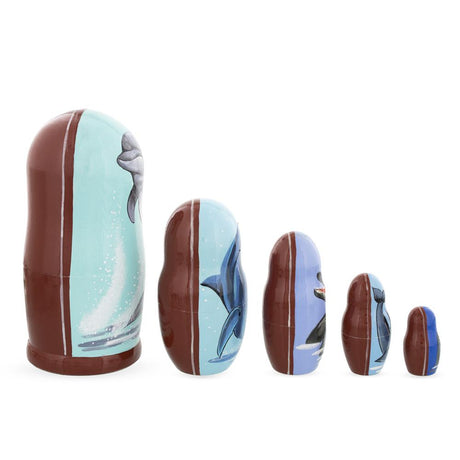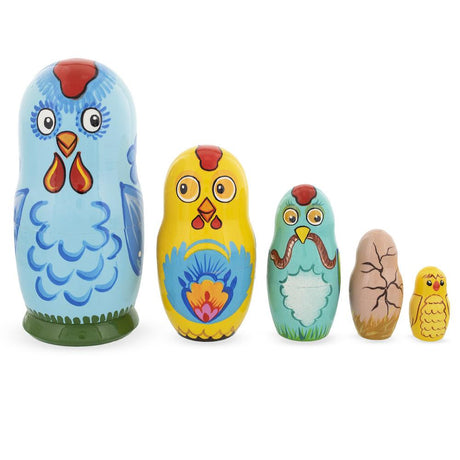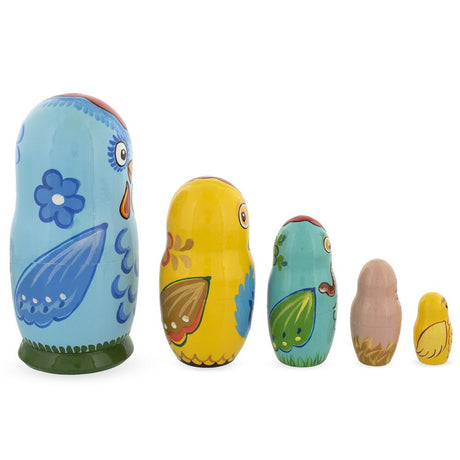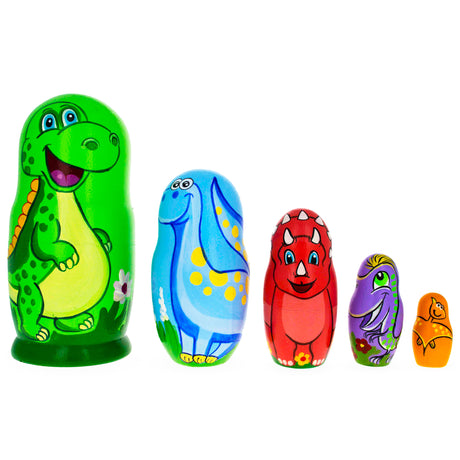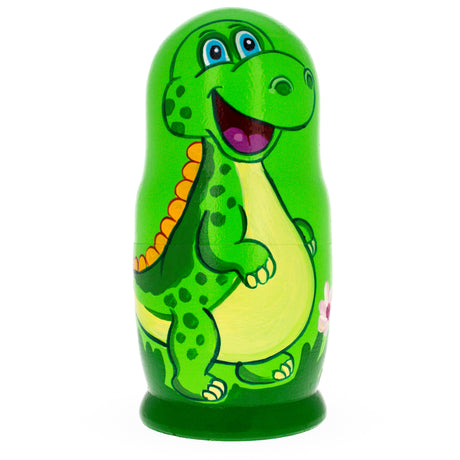BESTPYSANKY
5 Bunny, Duck, Rooster, Hen & Chick Egg Shape Wooden Nesting Dolls 5 Inches
In stock (100 units)$19.96 USD$24.95 USDUnit price /UnavailableBESTPYSANKY
5 Bunnies, Chick with Easter Eggs Wicker Basket Wooden Nesting Dolls 6 Inches
In stock (14 units)$36.52 USD$45.65 USDUnit price /UnavailableBESTPYSANKY
Set of 5 Bunny Family & Carrot Wooden Nesting Dolls 7 Inches Tall
In stock (100 units)$21.20 USD$26.50 USDUnit price /UnavailableBESTPYSANKY
Set of 5 Ukrainian Easter Eggs Pysanky Wooden Nesting Dolls 5 Inches
In stock (100 units)$22.40 USD$28.00 USDUnit price /UnavailableBESTPYSANKY
Set of 5 Colorful Easter Eggs Pysanky Wooden Nesting Dolls 5 Inches
In stock (100 units)$19.68 USD$24.60 USDUnit price /UnavailableBESTPYSANKY
Set of 5 Jesus Christ Rising, Angel and Easter Eggs Wooden Nesting Dolls 6 Inches
Low stock (8 units)$42.68 USD$53.35 USDUnit price /UnavailableBESTPYSANKY
Set of 3 Bunnies with Easter Eggs Nesting Dolls
In stock (100 units)$16.22 USD$20.28 USDUnit price /UnavailableBESTPYSANKY
6 Farm Animals Plastic Nesting Dolls Cow, Pig, Chicken, Lamb, Horse & Duck
In stock (100 units)$13.20 USD$16.50 USDUnit price /UnavailableBESTPYSANKY
6 Plastic Nesting Dolls - Santa, Snowman, Reindeer, Tree, Elf & Gingerbread
In stock (100 units)$13.20 USD$16.50 USDUnit price /UnavailableBESTPYSANKY
Set of 6 Wolf, Lion, Owl, Penguin Wild Animals Plastic Nesting Dolls 4.5 Inches
In stock (64 units)$13.20 USD$16.50 USDUnit price /UnavailableBESTPYSANKY
Blank Canvas Nesting Dolls: Set of 6 Erasable White Plastic Dolls
In stock (52 units)$7.66 USD$9.57 USDUnit price /UnavailableBESTPYSANKY
Set of Six Blackboard Plastic Nesting Dolls with Chalks DIY Craft
In stock (100 units)$6.31 USD$11.28 USDUnit price /UnavailableBESTPYSANKY
Tabby, Siamese, Maine Coon & Mouse Cats Wooden Nesting Dolls 7 Inches
In stock (100 units)$19.84 USD$24.80 USDUnit price /UnavailableBESTPYSANKY
Set of 6 Santa with Christmas Gifts Wooden Nesting Dolls 5.5 Inches
In stock (100 units)$21.00 USD$26.25 USDUnit price /UnavailableBESTPYSANKY
Set of 5 Multicolor Santa with Christmas Gifts Wooden Nesting Dolls 5.5 Inches
In stock (100 units)$17.20 USD$21.50 USDUnit price /UnavailableBESTPYSANKY
Nutcrackers with Drums, Sword, Trumpet Wooden Nesting Dolls 5.5 Inches
In stock (100 units)$17.12 USD$21.40 USDUnit price /UnavailableBESTPYSANKY
Set of 5 Santa, Mrs. Claus, Elf & Snowman Wooden Nesting Dolls 4.75 Inches
In stock (100 units)$14.52 USD$18.15 USDUnit price /UnavailableBESTPYSANKY
Rooster And Family Wooden Nesting Dolls
In stock (27 units)$41.80 USD$52.25 USDUnit price /UnavailableBESTPYSANKY
Joseph, Mary, and Jesus Nativity Scene Wooden Nesting Dolls 5.75 Inches
In stock (100 units)$18.00 USD$22.50 USDUnit price /UnavailableBESTPYSANKY
Set of 5 Blank Unpainted Unfinished Wooden Nesting Dolls 5.75 Inches
In stock (100 units)$15.41 USD$19.26 USDUnit price /UnavailableBESTPYSANKY
5 Unfinished Wooden Nesting Dolls with Paints DIY Craft Kit 5.75 Inches
In stock (100 units)$16.61 USD$20.76 USDUnit price /UnavailableBESTPYSANKY
Panda, Tiger, Leopard, Monkey, Eagle Wooden Nesting Dolls
In stock (100 units)$17.20 USD$21.50 USDUnit price /UnavailableBESTPYSANKY
Santa Claus, Mrs. Claus, Reindeer, Elf Wooden Nesting Dolls 6 Inches
In stock (100 units)$17.20 USD$21.50 USDUnit price /UnavailableBESTPYSANKY
Set of 5 Wise Owls Family Wooden Nesting Dolls 5.75 Inches
In stock (100 units)$15.60 USD$19.50 USDUnit price /UnavailableBESTPYSANKY
Set of 4 Unpainted Wooden Nesting Eggs Craft 5.25 Inches
In stock (100 units)$12.60 USD$15.75 USDUnit price /UnavailableBESTPYSANKY
Set of 4 Unfinished Wooden Nesting Dolls Craft 4 Inches
In stock (100 units)$8.00 USD$10.00 USDUnit price /UnavailableBESTPYSANKY
Dogs and Puppies with Bone Animal Wooden Nesting Dolls 4.75 Inches
In stock (100 units)$15.60 USD$19.50 USDUnit price /UnavailableBESTPYSANKY
Set of 6 Animals Wooden Nesting Dolls- Owl, Bear, Fox, Cat, Monkey, Pig
In stock (100 units)$21.20 USD$26.50 USDUnit price /UnavailableBESTPYSANKY
Set of 5 Nativity Scene Set Wooden Nesting Dolls 5.75 Inches
In stock (100 units)$19.84 USD$24.80 USDUnit price /UnavailableBESTPYSANKY
5 Animals Lion, Elephant, Dog & Cat Wooden Nesting Dolls 5.75 Inches
In stock (100 units)$18.00 USD$22.50 USDUnit price /UnavailableBESTPYSANKY
Facial expression Wooden Nesting Dolls
In stock (100 units)$17.20 USD$21.50 USDUnit price /UnavailableBESTPYSANKY
Set of 5 Penguins Wooden Nesting Dolls 6 Inches
In stock (100 units)$40.04 USD$50.05 USDUnit price /UnavailableBESTPYSANKY
Set of 5 Colorful Cats Wooden Nesting Dolls 6 Inches
In stock (95 units)$40.04 USD$50.05 USDUnit price /UnavailableBESTPYSANKY
Set of 5 Cats Family Wooden Nesting Dolls 6 Inches
In stock (86 units)$38.28 USD$47.85 USDUnit price /UnavailableBESTPYSANKY
Set of 5 Hippo, Zebra and Tiger Wooden Animal Nesting Dolls 6 Inches
In stock (58 units)$30.76 USD$38.45 USDUnit price /UnavailableBESTPYSANKY
Set of 5 Zoo Animals Wooden Nesting Dolls
In stock (55 units)$11.95 USD$14.94 USDUnit price /UnavailableBESTPYSANKY
Set of 5 Cats and Kitties Wooden Nesting Dolls 4.25 Inches
In stock (55 units)$24.78 USD$30.97 USDUnit price /UnavailableBESTPYSANKY
Set of 5 Raccoon Family Wooden Nesting Dolls 6 Inches
In stock (50 units)$38.72 USD$48.40 USDUnit price /UnavailableBESTPYSANKY
Sad Cat & Friends Wooden Nesting Dolls 5.75 Inches
In stock (49 units)$39.60 USD$49.50 USDUnit price /UnavailableBESTPYSANKY
Doctor & Nurses Wooden Nesting Dolls
In stock (48 units)$41.80 USD$52.25 USDUnit price /UnavailableBESTPYSANKY
In stock (44 units)$43.78 USD$54.73 USDUnit price /UnavailableBESTPYSANKY
Set of 5 Horses Wooden Nesting Dolls 6 Inches
In stock (41 units)$41.80 USD$52.25 USDUnit price /UnavailableBESTPYSANKY
Five Dogs Wooden Nesting Dolls 5.75 Inches
In stock (42 units)$38.72 USD$48.40 USDUnit price /UnavailableBESTPYSANKY
Set of 5 Panda Wooden Nesting Dolls 6 Inches
In stock (39 units)$40.04 USD$50.05 USDUnit price /UnavailableBESTPYSANKY
Set of 5 Dogs and Puppies Wooden Nesting Dolls 4.25 Inches
In stock (38 units)$24.78 USD$30.97 USDUnit price /UnavailableBESTPYSANKY
Set of 5 Dolphins Wooden Nesting Dolls 6 Inches
In stock (34 units)$41.80 USD$52.25 USDUnit price /UnavailableBESTPYSANKY
The Chicken Family Wooden Nesting Dolls
In stock (34 units)$39.60 USD$49.50 USDUnit price /UnavailableBESTPYSANKY
Set of 5 Dinosaurs Wooden Nesting Dolls 6 Inches
In stock (15 units)$23.32 USD$29.15 USDUnit price /Unavailable

